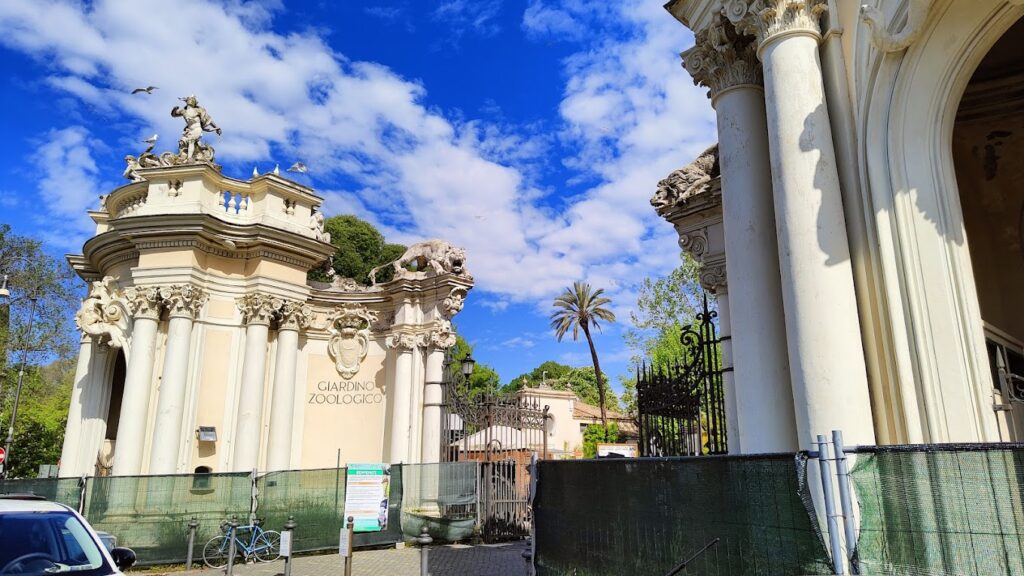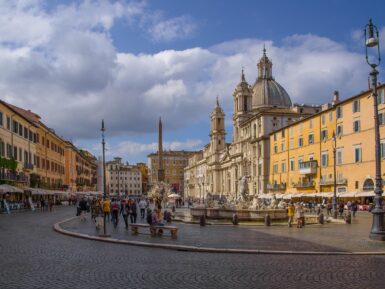This place is the green heart of Rome, a sparkling park filled with stunning gardens, sculptures and museums, with the Borghese as its crown jewel. This guide includes everything you need to know before visiting Villa Borghese and galleria Borghese.
Table of Contents
History

Villa Borghese dates to the early 17th century when cardinal Scipione Borghese the nephew of Pope Paul Transformed a vineyard into a garden estate. Scipione was not only a high-ranking religious figure but also one of the most passionate art collectors of his time.
His vision was twofold:
To create a luxurious countryside retreat showcasing the Borghese family’s wealth and power.
To house his growing collection of Renaissance and Baroque masterpiece, commissioning works from the greatest artists of the era.
Over the centuries, Villa Borghese expanded, incorporating formal Italian gardens, English style landscapes fountains and pavilions’ 1903 the Borghese family sold the estate to the Italian government which transformed it into a public park. Today it remains one of Rome, s largest and most beloved green spaces, making it a perfect addition to any 25 Best Things to Do in Rome itenerary.
Architecture

Galleria Borghese – A Baroque Masterpiece
A Borghese gallery originally designed a s a villa reflects renaissance and Baroque influence. The buildings layout was carefully planned to enhance the display of artwork with lavish frescoed ceilings ornate stucco decorations and grand marble columns.
Key architectural features:
1. Symmetrical facades with Corinthian platers and arched windows
2. Frescoed ceilings depicting mythological scenes
3. Elaborate interiors adorned with sculptures and paintings in their original 17th century settings.
For those who appericiate Rome’s artistic heritage, other must vist spots include the Pantheon and Trevi Fountain, both showcasing exquisite architectural details

Villa Borghese Gardens – The green oasis of Rome
Villa Borghese is not just a destination it is Europe’s most execute landscaped parks, covering 80 hectares (197 acres). The gardens blend formal Italian style with romantic English inspired landscapes featuring fountains temples hidden statues and tranquil lakes.
Must see highlights in the garden:-

1. Temple of Aesculapius – A neoclassical temple overlooking a scenic artificial lake, one of the most picturesque spots in the park.
2. Pincian Terrace – Offers panoramic views over Piazza del Popolo and Rome’s skyline. A must- visit, especially if you’re also exploring the nearby Spanish Steps.
3. Water clock – A 19th century hydro chronometer still in operation
4. Piazza di Siena – A historic horse-riding arena still used for equestrian events.
5. Casina di Raffaello – A 16th century villa now transformed into a children play area.


6. Bio Parco di Roma – A Zoo within the park home exotic wildlife.
For more iconic public places in Rome. check out Piazza Navona and Campo De’ Fiori
Best Time to visit
The best time to visit Villa Borghese and Galleria Borghese is during spring (Marh-May) and autumn (September November) when the weather is pleasant, and the crowd is smaller.
For quieter experience:
Visit in the morning (09:00 am – 11:00 am) or late afternoon (04:00 pm – 06:00 pm) when the lightning is ideal for photography.
Avoid midday in summer (June-august) it can be extremely hot and crowded.
Book tickets in advance for the gallery, as they have different time slots, with a 2-hour limit.
Explore Colosseum, Roman Forum, and Palatine Hill – Rome’s Ancient Trio in the morning and relaxing in Villa Borghese in the afternoon.
Photography Tips
1. Temple of Aesculapius – Capture stunning reflection in the lake early in the morning or during golden hour(sunrise/sunset). A wide-angle lens works best.
2. Pincian Terrace – Arrive here at the sunset for dramatic lightning.
3. Water clock– Unique subject use a close shot with a blurred background to highlight intricate details.
4. Strictly limited o picture policy in the gallery so takes advantage of the entrance hall and exterior gallery.
5. If you walk behind the gallery towards the gardens, you can frame people walking through archways for artistic natural moments.
FAQ’s
1. Is the Galleria Borghese worth visiting?
Yes, it houses masterpieces by Bernini Caravaggio, Raphel and Titan in stunning setting.
2. Can you enter Villa Borghese for free?
Yes, this park is complete free to enter and explore.
3. How long should you spend at Villa Borghese?
At least3-4 hours including Galleria Borghese longer if you explore the entire park.
4. Do you need to book Villa Borghese in advance?
No booking is needed for the park, but Galleria Borghese requires pre-booking.
5. Is Borghese free on Sunday?
No, but it is free on first Sunday of each month.





Leave a reply